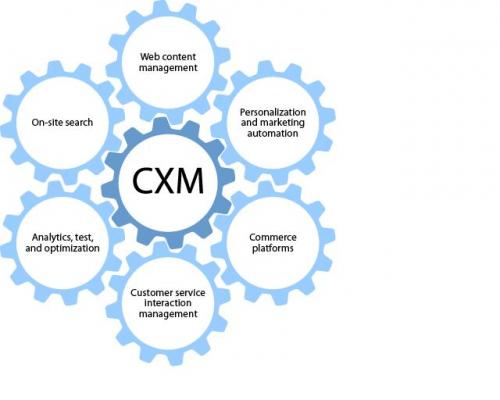CXM Solutions Visible On The Not-So-Distant Horizon
Customer experience management (CXM) solutions are emerging on the eBusiness technology solution horizon. These solutions promise to enable businesses to manage and optimize the customer experience across customer touchpoints through a combination of content management, search, customer targeting, analytics, personalization, and optimization capabilities. As digital experiences have grown more complex and the need to target and personalize the customer experience across the Web, mobile, contact center, and stores or branches becomes more and more critical, siloed systems that limit the eBusiness & Channel Strategy capability are failing to keep up. My latest report looks at the emergence of these solutions and how they are quickly evolving to support:

- Leveraging cross-channel data for targeted offers. New CXM technologies bring the merchant, site manager, and marketer together with business rules to provide targeted and personalized offers to the customer across touchpoints including the call center. Leveraging web and offline advertising, traffic, sales, and CRM data to enable improved targeting of the customer.
- Personalized experiences across touchpoints. As customer touchpoints proliferate, screen size shrinks, and consumers are increasingly distracted, CXM solutions will incorporate personalization tools to drive product recommendations, offers, and content to drive conversion across channels in a personalized, automated, and scalable fashion.
- Dynamic sites built for unique customer experiences. Highly dynamic, personalized, and targeted digital experiences will require both automation and business management tools. These tools will fundamentally change how sites and digital experiences are managed, evolving from “page building” to pages built on the fly. On dynamic sites, CXM solutions will extend component-driven functionality to deliver tagged and attributed pools of content assets — leveraging search and personalization to drive the most relevant experience for users.
It is very early in the evolution of these CXM tools. Today, many of the vendors packaging CXM solutions are adapting or extending the tools they already have to drive more of the overall experience, and for some the label CXM will be a re-packaging of their existing solution and strategy. For other solution categories — such as eCommerce platforms and CMS tools — CXM will be an aspect of how those solutions continue to adapt to meet their customers’ business needs. For eBusiness leaders, understanding these tools and the direction they are headed will be important to understanding their utility in helping them drive the business and in ensuring they have the tools they need to optimize an ever more complex digital business.
I want to thank a number of collaborators at Forrester in the development of this report, including Bill Band, Joe Stanhope, Paul Hagen, Suresh Vital, and Stephen Powers, who has a companion report on CXM for content and collaboration professionals here.
I encourage you to read the report, and I look forward to your comments.